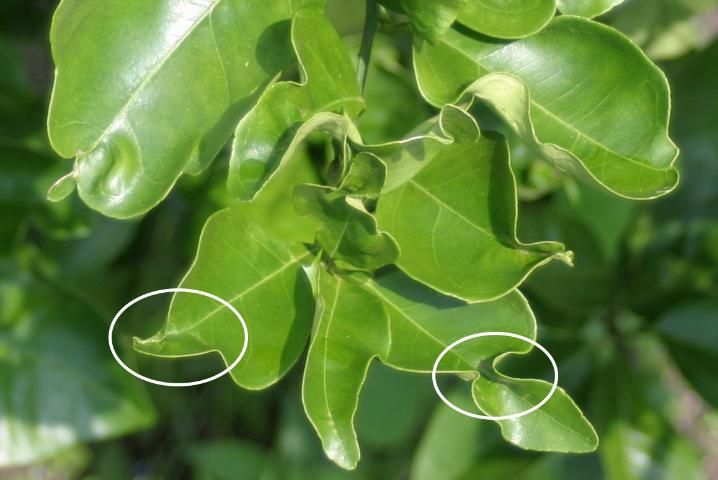Life Cycle
Eggs are almond shaped, about 0.3 mm long, pale yellow to dark orange, and found on new, unexpanded leaf flush. Three to four days are required for egg hatch in warmer temperatures (75°F–85°F/24°C–29°C) and slightly longer under cooler temperatures.
Nymphs are yellow with red eyes and large wing pads and 0.3–1.6 mm long. There are 5 nymphal stages, which require 12–14 days to complete. Nymphs generally have white waxy tubules attached to their anus; these tubules contain unused sugars from feeding on flush. Nymphs are found on new flush and have a slow, steady movement when disturbed.
Adults are 3–4 mm long and can be found mostly on new flush but also on mature leaves, especially outside the flushing season. Wings are mottled light grey with brown margins. Adults live for 30 to 50 days under ideal temperatures during which time females can lay between 500–800 eggs. Adult longevity increases in cooler temperatures. The adults stand at a 30°–45° angle and are easily disturbed. They can fly on their own or be carried by the wind.

Credit: M. E. Rogers, UF/IFAS

Credit: M. E. Rogers, UF/IFAS

Credit: M. E. Rogers, UF/IFAS

Credit: M. E. Rogers, UF/IFAS
Damage
Asian citrus psyllids feeding on newly formed leaves can cause young leaves to be aborted or deformed in the form of twisting and curling. However, the major hazard is that psyllids serve as the vector of Candidatus Liberibacter asiaticus, the causal agent of citrus greening (Huanglongbing; HLB). Psyllids acquire the bacteria while feeding on infected host plants and then transmit the bacteria to other trees. It takes an hour or more of feeding for the psyllid to acquire the bacteria.

Credit: M. E. Rogers, UF/IFAS

Credit: M. E. Rogers, UF/IFAS